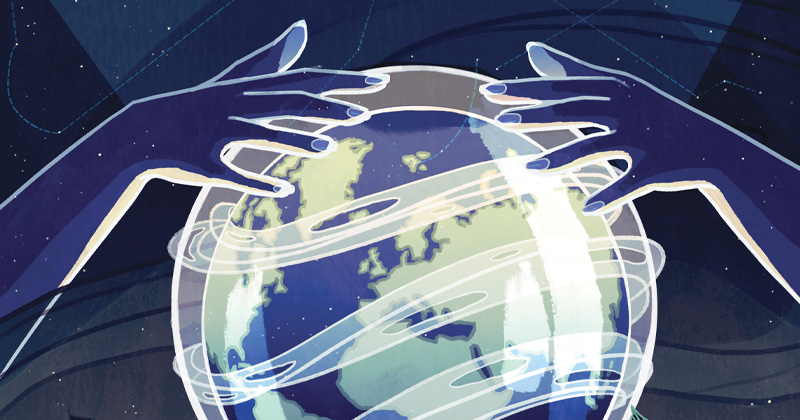


Museums of the Future
Illustration by Kailey Whitman February 06, 2019
What modern-day artifacts will people explore in the museums of the future?
Editor’s Note: This article is part of a larger series of Q&As that originated in the future-focused UD Magazine. To see additional questions, please visit the Envisioning the Future website.
For much of the 19th and 20th centuries, history museums collected artifacts with a personal connection to famous people: George Washington’s dentures or (one of my favorites) Thomas Edison’s last breath, supposedly captured in a test tube for Henry Ford and displayed at the Michigan museum Ford founded. It can be tempting to poke fun at this kind of collecting, but it stemmed from a belief in artifacts’ power to evoke the past, an idea we still hold to some extent. The 9/11 Memorial Museum in New York City, for instance, testifies powerfully to our continued need to encounter objects touched by history.
As a museum-worthy collectable of modern times, I propose a more lighthearted artifact: the hatchimal. Though intended for children, toys usually reveal the beliefs of the adults who purchase them. And the hatchimal, a cute and cuddly science experiment, encapsulates our current obsession with Artificial Intelligence (you can train it to speak), the sciences (STEM), and the “big reveal.”
The toy comes in a bird-like shell and — surprise! — 20 minutes later, it hatches to display what color and type of hatchimal is hidden inside. I see this staged disclosure as part of our larger cultural obsession with the body makeovers of the “Biggest Loser,” the splendid concoctions of the Food Network, and the many home renovations on HDTV. The hatchimal teaches children that not only is technology fun (and adorable), but it inculcates adults’ faith in technology to transform our bodies, our food, our dwellings and our natural world. Not bad for a tiny dragon in a fake shell.
Jennifer Van Horn is an assistant professor of art history and history at the University of Delaware, specializing in the fields of early American art and material culture.
Contact Us
Have a UDaily story idea?
Contact us at ocm@udel.edu
Members of the press
Contact us at 302-831-NEWS or visit the Media Relations website

